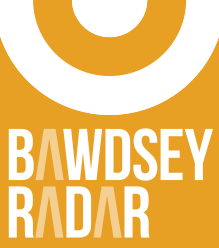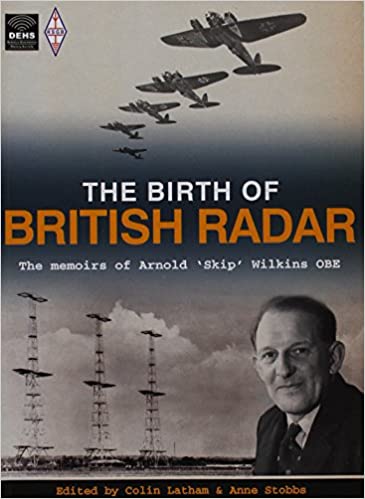 Amateur Radio Station :: M0PLT
Amateur Radio Station :: M0PLT 
Welcome to my website. Thank you for visiting - please wipe your feet. This site does not use Cookies, although I am partial to a nice cuppa and a biscuit! The site is dedicated to my Amateur Radio activities and how-to guides detailing the configuration of Linux operating systems and interfacing to the Yaesu FT-991(A) (and more). The information provided on this site is to the best of my knowledge and comes without guarantee or warranty.
You can navigate this site via the menu over on the left. If you are on a mobile device, please tilt it to Landscape. Please enjoy my pages detailing how to connect and configure the Yaesu FT-991(A) to Linux; how to use fldigi with the FT-991(A) under Rocky Linux; how to use Xastir and APRS with the TinyTrak4; and how to install, configure, and run WSJT-X.
Based in Biggleswade, Bedfordshire (IO92ub), I am always open to job offers for Senior Systems Administration (with a lean towards Enterprise Linux), or Electronics Repair/Calibration Engineer within a sensible commute.
How I got into radio
It was 1980-something, and a school-chum asked me if I wanted to buy a Harvard FM hand-held Citizens' Band radio for a tenner (£10). Without thinking, I said "Yes!". After filling it with a million 'AA' batteries, I started to listen-in to the local "breakers". Buried under the duvet (to avoid being heard by my parents) with the telescopic aerial sticking out, I eventually plucked up the courage to start talking. One of the locals sold me one of the infamous Amstrad 901 in-vehicle rigs. I bought myself a VSWR meter and a power-supply, and with some crude maths (no idea where I picked up the formula), some wire, a bit of acrylic, and some RG-58, I had a go at stringing a dipole across the loft. It worked fine ... unless the rest of the family tried to watch a video on the old Ferguson VCR. An early foray into the lack of EMC standards, the VCR had no rejection of a local 4 Watt 27 MHz signal. A picture of snow every time I keyed the transmitter did not endear me to the rest of the family! Choosing when to transmit to avoid complaints, a handle was needed to establish myself amongst all of the characters in the area. Perched under the TV stand was my Acorn Electron. I borrowed the name and became "The Electron".
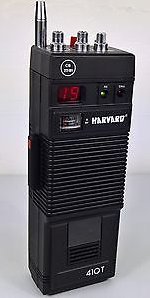 |
 |
 |
 |
The 90s
In the early 90s, I found myself working for a small local company as a Test Technician. They manufactured test-kit for the then analogue mobile phone handsets, and many an hour was spent glowing at 900 MHz! A work-colleague, Ian G4ASH, tried to turn me from the "dark side" of C.B. towards Amateur Radio, but the requirement for learning Morse put me, and I'm sure many others, off. I stuck with Citizens' Band and had constant laughs, with many Saturday nights spent playing the hide-and-seek game known as "Fox Hunting". A car, its driver (and hopefully female passengers), and the C.B., would go and hide somewhere. We would hide in garage blocks, railway sidings, used-car lots, and anywhere you could hide a car (or van) in the dark. This was the days before PIR sensor lights and CCTV! The trick for hunting was to use a really small aerial on the rear-right corner of your car. That made the signal highly directional towards the front-left. No-one could play without the infamous "pre-amp". With 25dB of gain, and 25dB of attenuation, it was a must to help track people's signal. With 25dB of attenuation and the RF gain turned down to zero, a full-signal meter meant you were on top of the "fox". As you drove past gaps in buildings, the signal meter (LEDs were the best) would jump from nothing to full-scale, then nothing again. A primitive form of RDF. Sadly the illegal raves of the 90s put paid to the game as previously open areas became battle-grounds and landlords erected high gates and fences to keep the idiots out. The knock-on was also a loss of locals spending a Saturday night peering into every dark hole trying to find the "fox". The county police could never muster that level of resource with eyeballs and radio comms!

My Citizens' Band radio of choice in the 90s - the Jesan KT-7007. The memory channels and scan function were absolutely fantastic. Retro-fitted with a sound-squelch board, and tweaked up at work on the NAMAS traceable test-equipment, the radio could hit -123dBm for 12dB SINAD. I found the lamps and their green silicone covers a little boring, so they were replaced with blue LEDs, whilst the signal meter and status LEDs ended up blue and white. The above is a random image off the web - as I sadly neglected to take any images of my radios before I sold them.
Radio Amateur
In 2008, after installing a new Solarcon Imax2000 on a 5 metre pole on the side of my house (and copping to £190 for planning permission after 1 person complained!) I was seriously disappointed to find wall-to-wall interference - until you got near UK channel 40. The Comtrend PG902 had landed, and no thanks to the idiots at BT Vision, it was happily wiping out the entire High-Frequency radio spectrum. Looking for an answer to the pollution, I stumbled across UKQRM - a volunteer-led group of shortwave listeners and Radio Amateurs investigating the noise of Power Line Technology. I joined as their only CBer, and still continue today campaigning on the issues of radio-spectrum pollution.
During the many exchanges of email on the group, I got to know and respect Stewart G3RXQ. He encourage me to visit the Shefford and District Amateur Radio Society to meet-up
and chat about all things radio and EMC. In a funny twist of fate, it turned out we share a birthday, so I have no excuse for forgetting his! The phrase "an older boy made
me do it!" applies to what happened next. Learning of my background in electronics and C.B., Stewart encouraged me to gain my Amateur Radio licence. I must thank
Martin Atherton G3ZAY, the  Cambridge University Wireless Society,
and Gonville and Caius College, for speeding me through the three levels of licence. Whilst working through the classes, I was M6PLT, 2E0PLT, and finally M0PLT. PLT
being a reminder of the thing I campaign against!
Cambridge University Wireless Society,
and Gonville and Caius College, for speeding me through the three levels of licence. Whilst working through the classes, I was M6PLT, 2E0PLT, and finally M0PLT. PLT
being a reminder of the thing I campaign against!
Why do I have an M call-sign?
If you have arrived at this website from outside of the UK, you may be wondering why we have M call-signs. We can thank the Marconi company for that. They leased their equipment and radio-operators to shipping companies, encouraging their operators to start and sign their messages with M (dash-dash in the Vale Cipher/Morse Code).
The International Radiotelegraph Convention of 1912 established the first internationally recognised call-sign standards, based on the country. The conference followed the sinking of the RMS Titanic (call-sign MGY, with MPA for RMS Carpathia) and was needed to regulate the free-for-all airwaves that existed at the time. This standard replaced the random three letter call-signs prevalent at the time. Major world powers were given single prefixes such as N, W, and half of the K prefix allocations KDA-KZZ (United States), A, D, and KAA-KCZ (Germany), F(France), with G, B and M (and 2) assigned to Great Britain. The convention was signed at the International Radiotelegraph Conference in London on July 5, 1912. It is important to note that while these international standards were applied to commercial wireless stations, Amateur Radio was, for the large part left on its own.
The official treaty list of call-sign prefixes did not come into being until after the Washington conference (1927). A non-binding list was compiled at the 1912 London conference, but did not make it into the convention itself. The system between 1912 and 1927 worked on precedent, as the practices used by the major players was to use three-letter coast station calls, and the four-letter ship identifiers that were in use internationally even before radio. At the 1927 conference this was brought up for several reasons: one was the rise of international civil aviation, and another was the increasing use of HF, where unambiguous call-signs became a critical aspect. Aviation identifiers and radio call-signs became patterned after each other. Amateur radio did not have any international legal status until 1927; and the forms of any pre-existing amateur call-signs became accordingly adjusted to the new international practice set out in the 1927 regulations.
In the 1930s Britain had the use of the letters B, G and M for British ships, and other letters for British Commonwealth (Colonies) ships. During World War II many British Warships had a call-sign beginning with the letter B, the rest starting with a G and later on, with the letter M. This lasted until approximately 1948-49 when China was given the letter B for its use, meaning that all British warships now began with either the letter G or the letter M.
In the very early days of Amateur Radio (just after the 1914-18 war) the British amateurs were distinguished by the initial figure 2. No G, of course. The 2 was doubtless allotted because there was, and still is, a horror in some circles of using 0 or 1, which might be mistaken in writing for the letters O and I.
After World War II, the G call-sign was assigned to all UK Radio Amateurs, with a Regional Secondary Locator for those that lived in the countries
that make up the United Kingdom (Wales, Scotland, Northern Ireland, and the Crown-Dependencies). The number 2 was briefly used for the experimental radio station
 2 Emma Toc.
2 Emma Toc.
 2MT
would lead on to the establishment of
2MT
would lead on to the establishment of  2LO
"London calling". 2LO would become the BBC; and the 2 and M would end up gathering dust at the back of a government cupboard.
2LO
"London calling". 2LO would become the BBC; and the 2 and M would end up gathering dust at the back of a government cupboard.
UK call-sign assignments changed after most countries removed the requirement to learn the Vale Cipher/Morse Code in order to gain an Amateur Radio licence that permitted operation on HF. This was due to international shipping migrating off HF to the more reliable satellite communications. With the restrictions lifted, the United Kingdom adopted a three-tier licence structure. The Office of Communication ceased issuing G call-signs to make a break from the two-teir Class-A (HF) and Class-B (VHF and above - no Morse ability) licenses. The M and 2 were found lurking in the cupboard. They were dusted off and pressed back into service for the new Foundation (M3/M6/M7), Intermediate (2E/2M/2W/2I/2D/2U/2J), and Full licenses (M0/M1/M5). And we have come full-circle - all thanks to Marconi!
In more recent times, Ofcom have started allowing new Full licence holders to request and pay for a G call-sign. I personally consider these to be vanity call-signs, and somewhat confusing, especially when someone has a G2 call-sign!
 Call signs in the United Kingdom
Call signs in the United Kingdom
 Early call-signs Short Wave Magazine April 1949
Early call-signs Short Wave Magazine April 1949

 The Storied History of the Ham Radio Call Sign (not the greatest formatting!)
The Storied History of the Ham Radio Call Sign (not the greatest formatting!)
Yaesu FT-991(A)
After my nth-hand FT-757GX gave up the ghost, I started to look around for a suitable replacement. Many hours were spent agonising over what I wanted in a radio. It boiled down to wanting to cover as many bands as possible, with as many modes as possible. Once you tick those boxes, the choice of radio drops to two or three. As an Electronics Engineer with a love for colourful opto-electronics, I find a lot of the radios quite lacking in display style - not helped by the high-resolution display screens of mobile phones and tablets!. Granted, they are very capable radios, but many are let down by their 1970s style monochrome display. The FT-991 caught my eye! It ticked many boxes: HF (and 50MHz), VHF, UHF, AM, FM, and SSB; and computer control via a single USB port.

At the time of writing, I had been playing with a FT-991 for around 18 months, and I really enjoyed it. Mid-May 2017 saw a mail-order returned FT-991A listed on ebay with £150 knocked off the list price. It was not there for long before I purchased it! Of the FT-991 and FT-991A, there are plenty of functions I have yet to experiment with (built-in RTTY?), however, there are many more that I have, and I have detailed some helpful tips on this site so you can get the most out of your FT-991(A).
MQ0PLT
For the June 2022 Platinum Jubilee celebrations I operated as Special Event Station MQ0PLT. Many thanks to everyone who made contact.
Many thanks to those who have sent eQSL cards. Please view the gallery of 372 cards.
Please view the MQ0PLT eQSL Awards.
Radio Active
When I have time to be on-air, I always log contacts that are not general local VHF/UHF chit-chat.
Awards
Many thanks to those who have sent eQSL cards. Please view the gallery of 781 cards.






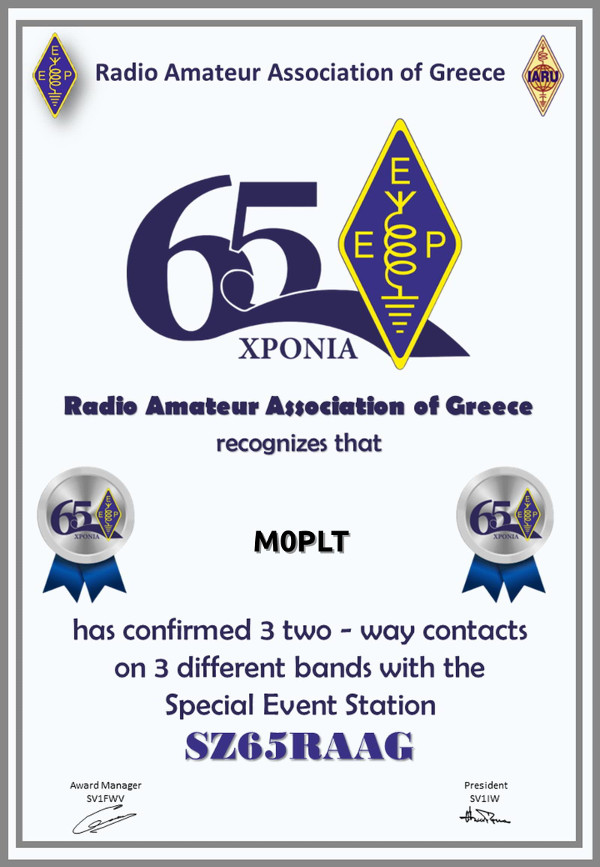
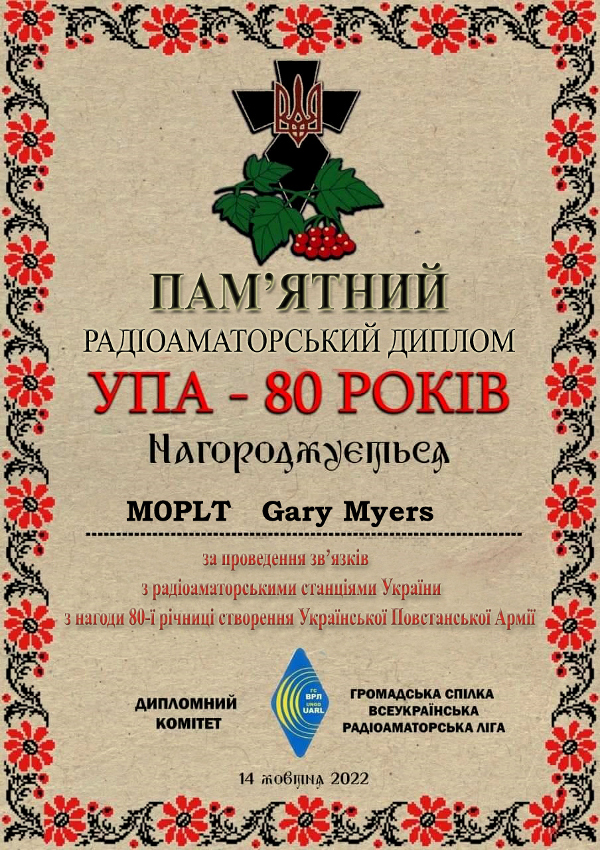
Places to visit
All radio amateurs should pay homage to the birthplace of RDF in the UK: Bawdsey Radar in Suffolk. Do not forget to show some #radarlove on Social media.
Please note: you will be driving on very rural roads with passing places, so please drive carefully. Unfortunately, Bawdsey House is private and not open to the public. If you would like to see the sea-front vistas, continue to the parking provided near the quay and take the short walk to the pebble beach head. There is a Tea shop near the ferry crossing. If you plan to take the ferry from Felixstowe and walk to the Radar museum, allow yourself plenty of time, as it is approx. 1.8 kilometres.
I recommend downloading an off-line map if you are using a phone-based navigation. Depending on your provider, you may encounter a lack of mobile coverage in various places.
Lots of very cool RADAR stuff on display at the RAF Air Defence Radar Museum at Neatishead in Norfolk.
Allow yourself time if you are travelling via the A1270 around Norwich. The route through Wroxham can be busy with Norfolk Broads tourist traffic. The roads to Neatishead are also narrow with passing places, so please drive carefully.
I recommend downloading an off-line map if you are using a phone-based navigation. Depending on your provider, you may encounter a lack of mobile coverage in various places.
If you are heading back towards Norwich after visiting Neatishead, why not call in at the aviation museum and stick your head in the Avro Vulcan XM612 wheel wells.
Books to read
Before We Went Wireless: David Edward Hughes, His Life, Inventions and Discoveries 1831-1900 - ISBN: 9781884592539
Cycles-per-second should be called Hughes, not Hertz! Not the first time someone else has taken the credit for the work of others!
The Birth of British Radar - The memoirs of Arnold 'Skip' Wilkins OBE - ISBN: 9781905086757
Read all about the Daventry Experiment and how it led to Chain Home.
Most Secret War - R. V. Jones - ISBN: 9780141042824
An interesting tale of how science and technology shortened the second World War, how we battled the German 'beams' with 'Window', and a salutary lesson in how not to do things!
The need for a battery / generator
"On 5 December 2015, Storm Desmond caused unprecedented flooding in north Lancashire and Cumbria. In Lancaster, the main electricity sub-station was flooded, cutting electricity supply to 61,000 properties."
The Royal Academy of Engineering article on Lancaster city’s four-day power cut offers lessons for whole UK is a must-read for anyone with a passion for radio.
Update: 18th October 2022 Link to the RAENG website appears to be lost following an upgrade to their site. Here is a blog from
 The Blackout Report
that offers an overview of what happened.
The Blackout Report
that offers an overview of what happened.
I recommend downloading and reading the report:  Living without electricity
Living without electricity
If you ever needed a reason to invest in a large capacity deep-cycle battery and/or a generator (and spare fuel), then the flooding and subsequent power-loss is suitable justification! I would also recommend you send the PDF to anyone who believes the Internet or their mobile phone will save them. Here is a clear definition of how fragile the Internet and the mobile telephone network really is!!
Slow Scan Television
The combination of the QSSTV application for Linux, the FT-991A, and a Comet GP-95N allowed me to receive Slow Scan Television images from the International Space Station.
To save space and fingers on the scroll wheel, I have moved the SSTV images to the SSTV Gallery. Please take a look.
Amateur Radio - Planning Matters
Amateur Radio (and Citizens' Band radio) is under attack. QRM (radio frequency interference), a useless national radio regulator, expertise becoming SK, and a dis-interested youth asking "why don't you just use the Internet" does not bode well for the pinnacle of all STEM hobbies. Add outdated restrictive planning laws to the mix, and it is small wonder people are turning away.
Have you ever installed a new experimental aerial only to find a neighbour has complained and you now have the local planning department pestering you? Consider yourself lucky if this has not happened to you. Planning regulations and the councils that enforce them are totally inflexible to the experimental nature of Amateur Radio. Design and build your own aerial, then install it on a pole to test it, and you will need planning permission. Once granted, your experimental aerial becomes a fixed-structure. Take that aerial down and replace it with another design, and you will again need planning permission; or you will have to return to the "original design".
John G1YDQ found that out to his cost. One complaint cost him £500 as his local council refused to acknowledge the 4-year rule. This screen-shot is presented here with John's permission:

Keith G6NHU shares his experiences of planning on his  blog.
Comments from others also highlight the issues of different councils doing as they please.
blog.
Comments from others also highlight the issues of different councils doing as they please.
Joint Statement by Gary Myers and Stuart Dixon
Parliamentary petition by Gary Myers M0PLT regarding taking amateur radio out of planning laws.
As the  Parliamentary petition
to change planning laws organised by Gary M0PLT draws to a close, we realise there is a valuable lesson to take on board about the way change happens in Amateur Radio,
government, and local policy. The change this petition advocates is out of date with current policy but a minority of Radio Amateurs saw the need for change.
The majority abstained and the petition is about to end. We think, in Britain, minorities matter. Every licensed Radio Amateur will want to experiment and
it is up to all of us to celebrate that (which is our heritage) and make sure it can happen.
Parliamentary petition
to change planning laws organised by Gary M0PLT draws to a close, we realise there is a valuable lesson to take on board about the way change happens in Amateur Radio,
government, and local policy. The change this petition advocates is out of date with current policy but a minority of Radio Amateurs saw the need for change.
The majority abstained and the petition is about to end. We think, in Britain, minorities matter. Every licensed Radio Amateur will want to experiment and
it is up to all of us to celebrate that (which is our heritage) and make sure it can happen.
Petition by G4IYK regarding M0PAM and Nightmare Neighbours
This petition has reported most of the issues that lead to nightmare situations for licensed Radio Amateurs at
 http://www.strugl.org/. While strugl.org is not an Amateur Radio website,
it deals with toxic (and therefore harmful) situations and change.
http://www.strugl.org/. While strugl.org is not an Amateur Radio website,
it deals with toxic (and therefore harmful) situations and change.
We both think going forward, the approach taken by the
 Armando Martins Campaign,
a petition signed by forty three thousand people, is more likely to bring about the type of change required, provided Radio Amateurs get behind it.
This is not just M0PAM’s fight. Please follow the link and
Armando Martins Campaign,
a petition signed by forty three thousand people, is more likely to bring about the type of change required, provided Radio Amateurs get behind it.
This is not just M0PAM’s fight. Please follow the link and
 donate.
donate.
Gary Myers, M0PLT and Stuart Dixon, G4IYK
Donations welcome!
If you find this website helpful, please consider a donation to its running costs. Donors will be thanked via Twitter (unless you wish to remain anonymous).
Are you suffering from strange interference noises on your radio?
Please see: UKQRM and Ban PLT for help and information!
Page updated: 3rd January 2024
Home
|
Tips
|
Linux
|
fldigi
|
APRS
|
QSSTV
|
WSJT-X
|
Blue Ham
|
Projects
|
PSU
|
Repairs
|
Downloads
|
Links
SSTV Gallery
|
eQSL Gallery
|
MQ0PLT eQSL Gallery
|
MQ0PLT eQSL Awards



